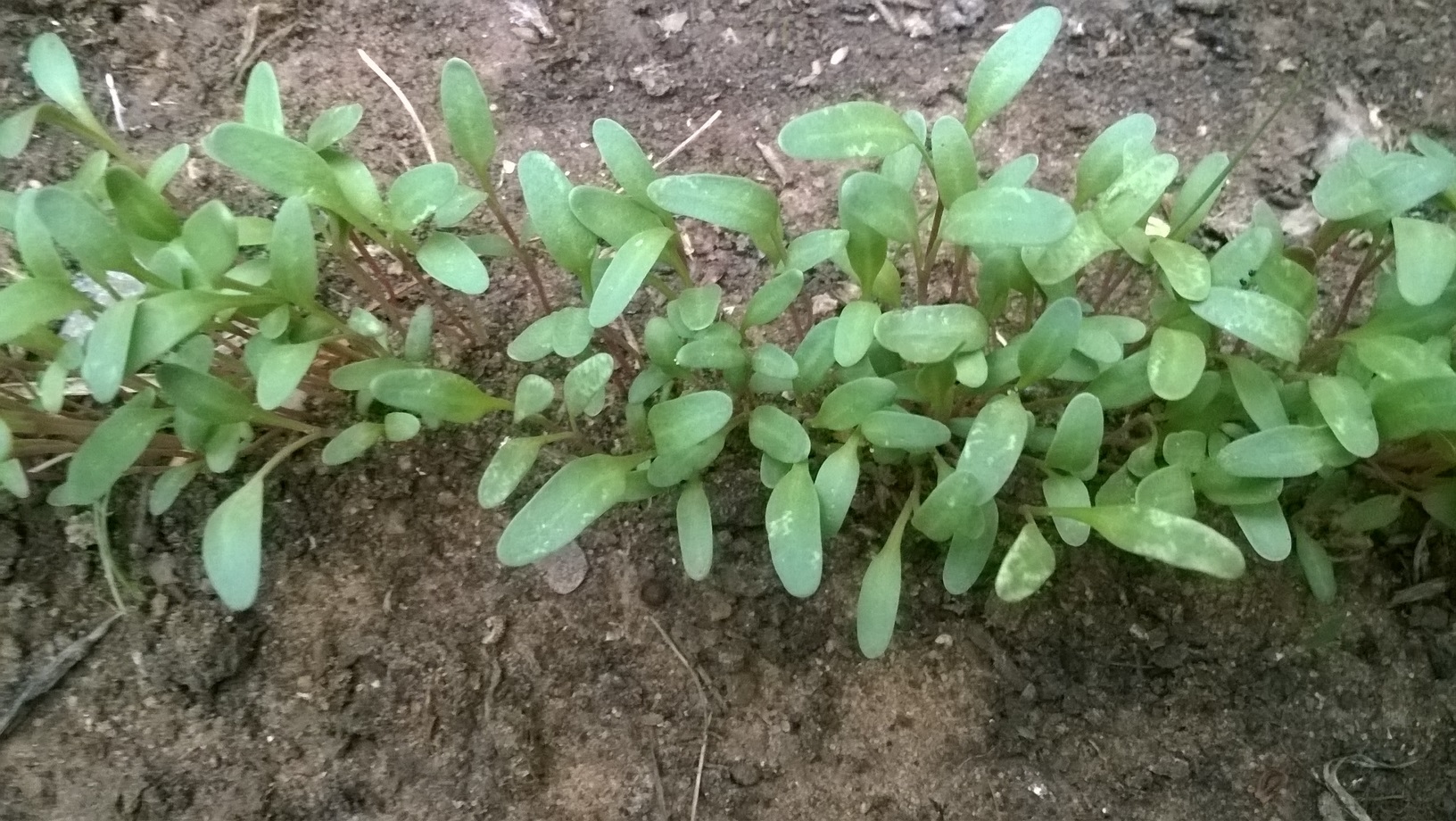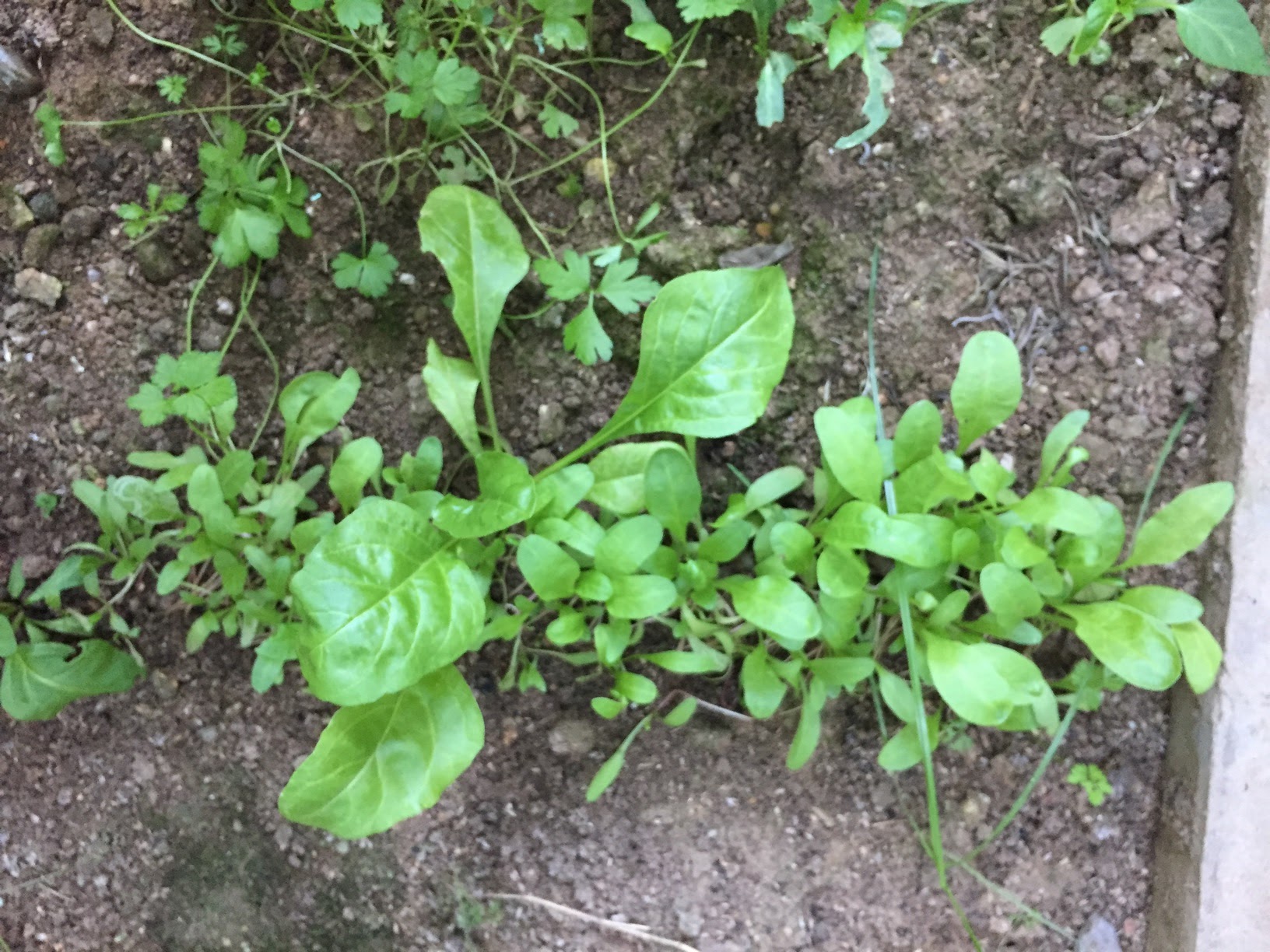Chard is delicious, nutritious and easy to grow. Chard is a leafy vegetable closely related to garden beets. Chard is known by a number of different names in, including Swiss Chard, Spinach Beet, and Leaf beet. Grown for its tasty and nutritious leaves and leafstalks. Colorful leaves and petioles make it great for edible landscaping and ornamental plantings. Chard is one of the more nutritious, versatile vegetables. It is rich in both vitamins K, A, C and E, plus several B vitamins, magnesium, manganese, potassium, iron and dietary fiber, as well as antioxidants. Chard is a good source of calcium too. Chard is actually a beet that really doesn’t produce a bulbous root. These wonderful plants do, however, produce many large, dark leaves that can have red, white or yellow stalks. These leaves are perfect in dishes that include greens. Growing organic chard yourself is the only way to have beautiful leaves like these.
How to Grow Organic Chard
Chard Seeds
Planting chard seeds is very similar to planting beet seeds, as its close relative, and like beets, chard is a hearty plant, able to grow in almost any condition other than very hot or very cold temperatures. While chard is tolerant of many soil types, having a soil that is rich in organic matter will help them produce even more delicious vegetables. Remember that Chard can occupy the same position for many months, so make sure you can afford to dedicate a suitable space for a longer period. Chard loves a sunny, open position. Grow it in soil that’s both moist and fertile. Dig the soil before sowing chard seeds, removing big stones, weeds and incorporating plenty of garden compost or well-rotted manure. I always use my well-rotted chicken manure.
Watch Chicken Manure Benefits To The Garden Soil Video
Chicken manure for vegetable garden fertilizing i excellent. This natural fertilizer is very high in nitrogen and also contains a good amount of potassium and phosphorus. Chicken manure composting gives the manure time to break down some of the more powerful nutrients so that they are more usable by the plants.
Planting Chard Seeds
- Determine date of first frost and begin work in the garden 6–8 weeks prior.
- Prepare soil by turning, creating a soft, rich loamy texture to at least a 4-6"depth.
- Always Check for good organic seeds!
- Sow chard seeds from mid-March to mid-May 2.5 cm deep, 30 cm apart in rows 35 cm apart.
- Cover the seed with soil, gently pat down then water along the rows to further settle the soil and prime your seeds for germination.
- For a constant supply, try sowing a new row every three weeks to pick over winter.
- In the early growth stages, protect seedlings with a row cover.
- Spread mulch around seedlings to conserve soil moisture and keep weeds at bay.
. Thinning Chard Seedlings.
. Chard Plants Care.
- Apply organic mulch such as compost to keep the soil cool and moist and to keep down weeds. Mulching will also help keep the plant leaves clean, reducing the risk of disease.
- Keep the soil around plants free of weeds and water plants in the soil every two weeks. Like all vegetables, chard does best with a nice, even supply of water.
- Water regularly, applying 1 to 1.5 inches of water per week if it doesn’t rain. Chard likes to stay moist. But too much water will cause disease. Best watering practice is a daily, light watering directly to the soil at the base of plants. However, pay attention to soil conditions. The soil should never stay completely dry.
- Remove any yellowing leaves at the base of the plant, which will rot and can promote disease if not picked.
- Keep your chard plants weed free and well watered if the weather is dry. It is also a good idea to remove the lower leaves, which will turn brown and rot.
- Regular watering will encourage plenty of fresh, leafy growth, and is essential in dry weather to stop the plants from running to seed, or ‘bolting’.
- If the plants start to produce tall central shoots or 'bolt' cut off any flower heads as they appear.
If they reach this stage you have two choices, the first choice is that you can collect seeds for the next growing season and the second is that they should be dug up and added to the compost heap as they'll stop producing tender leaves.
The first sign of seed production is bolting (the formation of a tall seed stalk), which happens in late spring when the temperature starts to rise. Then yellow-green flowers form, followed by seed capsules along the stem and when the stems turn brown. The seeds can be stripped by hand as seeds matures.. How to Collect and Store Chard Seeds.
- Collect the stems and seed capsules in a paper bag.
- Place a paper bag over the flower/seed cluster.
- Hold on to the top of the bag.
- Bend the stem over, so the seed capsules are pointed downwards, then snap or cut the stem off.
- Fold the end of the bag to keep dust out and set in a cool, dry place.
- The seeds will loosen and fall to the bottom over the course of a week or two.
. Properly stored chard seeds will last up to 5 years.
Watch How to Collect Chard Seeds Video
. Companion Plants For Chard.
All plants from the brassica family like cabbages and broccoli, as well as alliums like onions and garlic, grow well with chard. Other plants which take well to chard as a neighbor are tomatoes, radish, and celery.
. Harvesting Chard Leaves.
When the plants are 9 to 12 inches tall, you can start harvesting them. Start snipping and eating chard anytime after leaves form. To harvest mature chard, cut full-size leaves from the outside of the plant.
. Chard Problems.
You have to be diligent about weeding and stay especially proactive about preventing early leaf-miner infestations. Between April and May, leaf miners lay eggs on the underside of leafy greens such as chard, leaving blotchy brown trails in the foliage. Prevent these hungry critters from depositing their eggs by covering your chard with a floating row cover. Cut away infested leaves. Chard is quick to recover and fast-growing, so any damaged plants should spring up again in no time.
Purchase Chard Seeds From HERE!
If you want to add more lovely and nutritious vegetables to your spring garden? Growing Organic Chard should be on the top of your list!
If you have any tips for growing organic chard, we'd love to hear them - please share them in the comments below.
Pin for later!
Don’t forget to follow us on Facebook, Instagram, Pinterest, and Twitter for more smart Organic Gardening Ideas and Tips!
In transparency and compliance with legal guidelines, please be aware that some of the links on this site are affiliate links. These are carefully chosen products that I have personally used, tested, and genuinely recommend. When you click and make a purchase through these links, I may earn a small commission, at no additional cost to you.
This commission helps support the maintenance of this site, allowing me to continue providing valuable content and recommendations. Rest assured, my priority is to offer authentic and reliable information, and I only affiliate with products that align with the values and standards I uphold.
Your trust means everything to me, and I appreciate your support. If you have any questions or concerns, please feel free to reach out. Thank you for being a valued part of our community!











